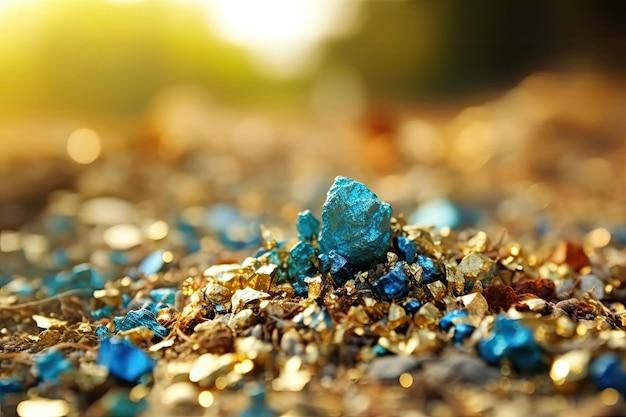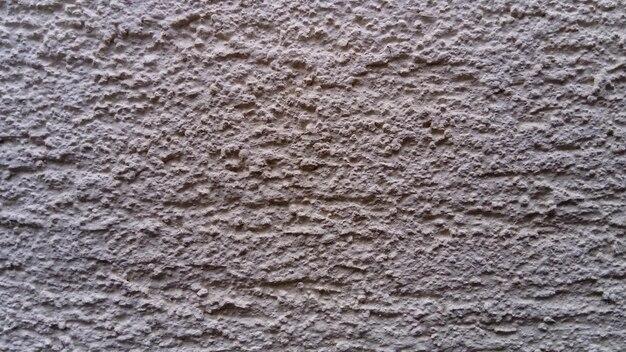Plaster is a commonly used building material known for its versatility and durability. Whether you’re remodeling your home or tackling a DIY project, chances are you’ve come across this versatile product. But have you ever wondered if plaster contains silica? Silica, a naturally occurring mineral, has received attention due to its potential health hazards when inhaled as dust. In this blog post, we will delve into the question of whether plaster contains silica and what potential risks it may pose to our health. So, if you’ve ever been curious about the connection between plaster and silica, keep reading to find out! Let’s dive into the dust cloud and uncover the facts about plaster and silica.
Does Plaster Contain Silica
Plaster – we’ve all heard of it, seen it, or maybe even used it in our homes. But have you ever wondered what exactly goes into the making of this versatile building material? More importantly, does plaster contain silica? Let’s dive into this topic and uncover the truth about plaster and silica.
Understanding the Basics: What is Plaster
Before we delve into the silica content of plaster, let’s first understand what plaster is. Plaster is a widely used construction material known for its ability to create smooth, durable surfaces. It is commonly used to cover walls, ceilings, and even create decorative elements. But what’s it made of?
The Ingredients of Plaster
Plaster is composed of several key ingredients that work together to create its unique properties. These ingredients typically include gypsum, water, and various additives. Gypsum, a soft sulfate mineral, serves as the primary component of plaster. It’s formed by the evaporation of ancient saltwater and is known for its fire-resistant qualities.
The Silica Connection
Now, let’s address the burning question – does plaster contain silica? The answer is a resounding yes, but with a twist! While gypsum, the main ingredient of plaster, doesn’t contain silica, some additives used in plaster production may include materials that contain trace amounts of silica.
Silica in Additives
Certain additives used in plaster production, such as silica sand or silica-based fillers, may contain silica. These additives can enhance the strength, adhesion, and flexibility of plaster. However, it’s important to note that the amount of silica in plaster is typically minimal and well below the threshold where health concerns arise.
Silica Safety Measures
Although the level of silica in plaster is generally considered safe, it’s always wise to take precautions when working with any construction material. When mixing or sanding plaster, it’s advisable to wear protective equipment, including a dust mask and goggles, to minimize any potential inhalation or eye irritation.
Silica and Health Risks
While the small amount of silica in plaster generally poses no significant risks, prolonged exposure to high levels of crystalline silica dust, particularly in industrial settings, can lead to respiratory issues such as silicosis. It’s crucial to follow proper safety protocols when dealing with silica-containing materials in large quantities or over extended periods.
To wrap things up, plaster itself doesn’t inherently contain silica. However, certain additives used in plaster production may contain trace amounts of silica. When working with plaster, it’s important to take necessary safety precautions, but there’s no need to worry about silica-related health risks stemming from regular, household use of plaster. So go ahead, embrace the versatility and charm of plaster in your home projects, and rest easy knowing that silica content in this beloved building material is not a major concern.
So now you know the lowdown on plaster and silica. It’s time to get creative and plaster away, safe in the knowledge that your DIY endeavors aren’t putting you at risk of a silica showdown in your living room. Happy plastering in 2023 and beyond!
FAQ: Does Plaster Contain Silica
Welcome to our comprehensive FAQ-style guide on the topic “Does Plaster Contain Silica?” If you’ve ever wondered about the potential risks and effects of working with plaster, you’ve come to the right place. We’ve compiled a list of commonly asked questions to provide you with all the information you need. So, let’s dive in and address your concerns!
How quickly can you develop silicosis
Silicosis is a serious lung disease caused by prolonged inhalation of silica dust. The time frame for developing silicosis can vary depending on exposure levels and individual factors. In general, it may take years of continuous exposure to silica particles before the symptoms of silicosis start to surface.
Is silica found in plaster
Yes, silica can be found in certain types of plaster. Traditional plaster materials often contain gypsum, which is a naturally occurring mineral that can contain varying amounts of silica. However, it’s important to note that not all plasters contain silica, as there are alternative formulations available.
What happens if you breathe in plaster dust
Breathing in plaster dust can have various effects, depending on the composition of the plaster. Inhaling excessive amounts of silica-containing plaster dust can lead to respiratory issues, including the potential development of silicosis. It’s crucial to minimize the inhalation of dust particles by taking appropriate safety measures when working with plaster.
Is plaster toxic if ingested
Plaster is not intended to be consumed, but accidental ingestion is unlikely to cause significant harm. While ingesting a small amount of plaster is generally harmless, it’s best to avoid eating or swallowing plaster, as it may cause digestive discomfort.
Can lungs heal from silica exposure
Once lung damage occurs due to silica exposure, it is often irreversible. However, taking precautions to prevent further exposure and maintaining a healthy lifestyle can help slow down the progression of the disease and improve overall lung function.
Can you recover from silicosis
While there is no cure for silicosis, early detection and appropriate medical care can help manage the symptoms and improve the quality of life for individuals affected by the disease. It is crucial to consult with a healthcare professional to develop a personalized treatment plan.
Is breathing drywall dust harmful
Breathing in drywall dust can be irritating to the respiratory system, particularly when extensive sanding or demolition is taking place. While drywall itself doesn’t contain silica, the joint compound used in the finishing process may contain small amounts. It’s essential to wear appropriate protective gear and ensure proper ventilation when working with drywall to minimize potential health risks.
How can I cleanse my lungs
Maintaining good lung health is essential. While there is no magical lung cleanse, certain measures can help keep your lungs in good shape. Regular exercise, maintaining a healthy diet rich in antioxidants, staying hydrated, and avoiding smoking are some ways to promote lung health.
How long does silica dust stay airborne
The amount of time silica dust lingers in the air can vary depending on factors such as particle size, ventilation, and airflow. In general, larger particles tend to settle more quickly, while smaller particles may remain suspended for longer periods. It’s important to implement effective dust control measures, including proper ventilation, to minimize airborne silica dust.
Can plaster dust cause a persistent cough
Inhaling excessive amounts of plaster dust, especially if it contains silica, can irritate the respiratory system and lead to a persistent cough. If you experience prolonged or severe respiratory symptoms after exposure to plaster dust, it’s advisable to seek medical attention.
What foods support lung repair
While specific foods cannot magically repair damaged lungs, a balanced diet consisting of fruits, vegetables, whole grains, lean proteins, and healthy fats can provide essential nutrients that support overall lung health. Foods rich in antioxidants, such as berries, leafy greens, and nuts, may be particularly beneficial.
Is plaster dust toxic
Plaster dust itself is not inherently toxic. However, inhaling excessive amounts of plaster dust, especially if it contains silica, can have adverse effects on respiratory health. It’s important to practice proper safety precautions when working with plaster to avoid unnecessary exposure to dust particles.
Is there silica in drywall
Drywall itself does not typically contain silica. However, some joint compounds used during the installation or repair process may contain small amounts of silica. It’s crucial to check the ingredients of the joint compound being used and take appropriate safety measures if it contains silica.
What happens if you breathe in silica
Inhaling silica dust can lead to a range of respiratory issues. Prolonged exposure to silica dust can cause lung inflammation, scarring, and potentially lead to serious lung diseases such as silicosis. It is essential to minimize exposure to silica dust and wear appropriate protective equipment when working in environments where silica is present.
Can silica dust cause asthma
While silicosis is the primary concern associated with silica dust, exposure to silica particles may also contribute to the development or exacerbation of asthma in some individuals. It’s important to take necessary precautions to reduce exposure to silica dust to protect respiratory health.
How can I strengthen my lungs
To promote lung health and strengthen your lungs, engaging in regular aerobic exercise can be beneficial. Additionally, practicing deep breathing exercises, avoiding smoking and secondhand smoke, and maintaining overall good health through a balanced diet and regular check-ups can help keep your lungs strong and healthy.
Is plaster dust harmful to lungs
Inhaling excessive amounts of plaster dust, particularly if it contains silica, can be harmful to the lungs. Dust particles can irritate the respiratory system and potentially lead to lung diseases such as silicosis. Taking proper safety measures, including using personal protective equipment and maintaining good ventilation, is essential when working with plaster.
When was asbestos used in plaster
Asbestos was commonly used in various construction materials, including plaster, until the late 1970s. Its heat resistance and durability made it an attractive additive for certain applications. However, due to the health risks associated with asbestos exposure, its use in plaster and other products was largely phased out.
What are the symptoms of silicosis
The symptoms of silicosis can include persistent cough, shortness of breath, fatigue, chest pain, and respiratory infections. However, it’s important to note that the symptoms may vary depending on the stage and severity of the disease. If you have concerns about potential exposure to silica and experience respiratory symptoms, consult with a healthcare professional.
How do I remove dust from my lungs
While it is not possible to physically remove dust particles from the lungs, the respiratory system can gradually eliminate them through its natural cleaning process. To support your lungs’ natural cleansing, maintain good respiratory hygiene, such as avoiding further exposure to dust, staying hydrated, and practicing deep breathing exercises to help expel mucus and trapped particles.
Can wet plaster make you sick
Working with wet plaster generally poses fewer risks compared to dry plaster. However, prolonged or repeated contact with wet plaster can still cause skin irritation or rashes in some individuals. It’s advisable to wear appropriate protective gloves and clothing when handling wet plaster to minimize potential skin reactions.
Is it safe to sleep in a room with freshly plastered walls
Freshly plastered walls may emit some odors or fumes due to the drying and curing process. While these odors are generally not harmful, they can be unpleasant. It’s recommended to ensure proper ventilation in the room by opening windows or using fans to help dissipate any lingering odors.
Conclusion
We hope this FAQ-style guide has provided you with valuable insights into the potential risks and effects of working with plaster containing silica. Remember to prioritize your safety by taking necessary precautions, such as wearing personal protective equipment and maintaining proper ventilation. If you have any specific concerns or experience symptoms related to plaster exposure, consult with a healthcare professional for personalized advice. Stay informed, stay safe, and keep your lungs healthy!
Disclaimer: This article is for informational purposes only and should not be considered medical advice. Always consult with a healthcare professional for personalized guidance based on your specific circumstances.
Note: The information provided in this article is up to date as of 2023.

